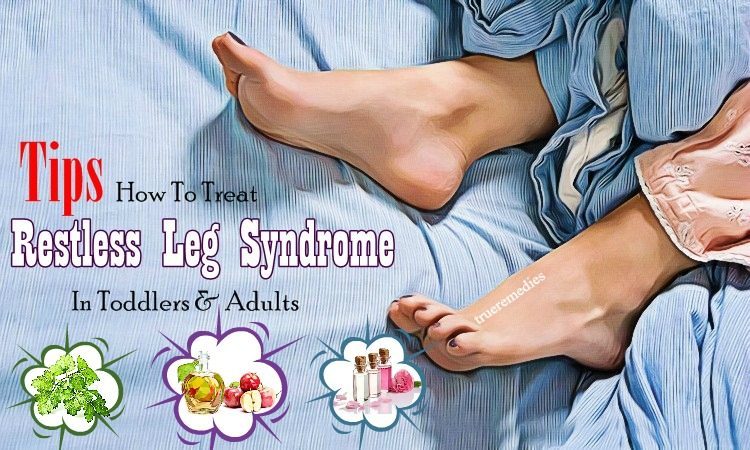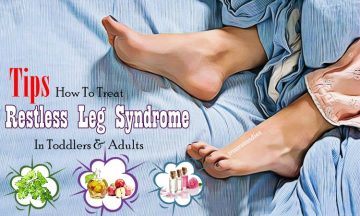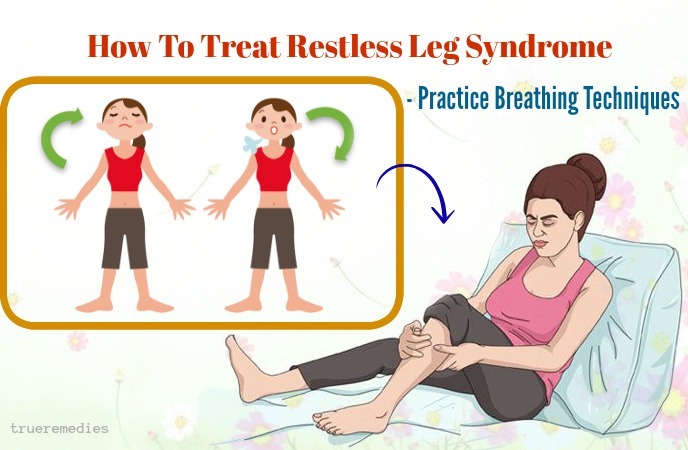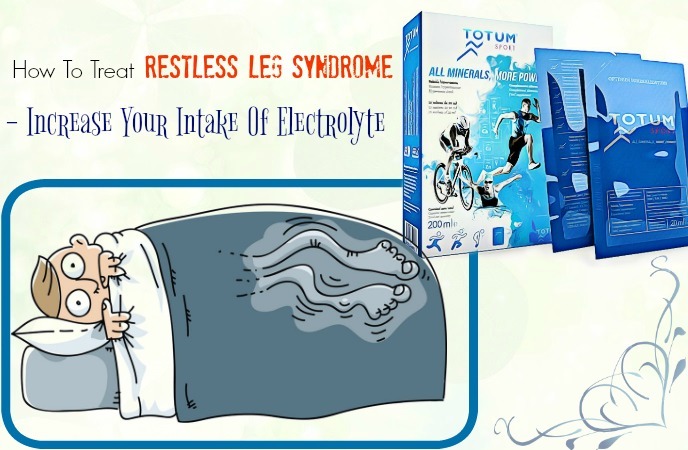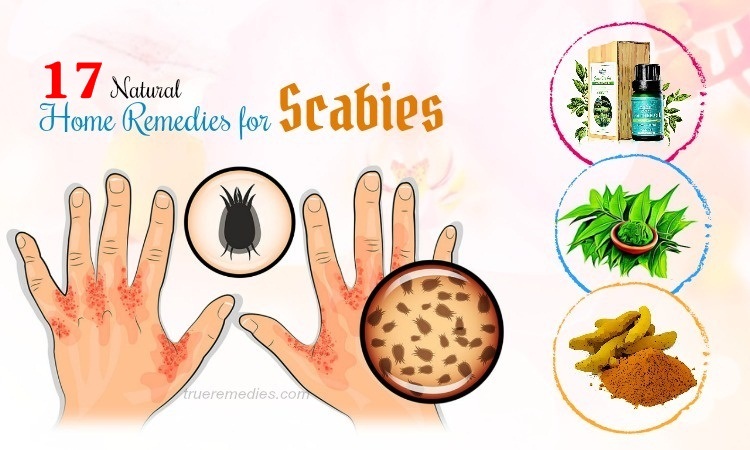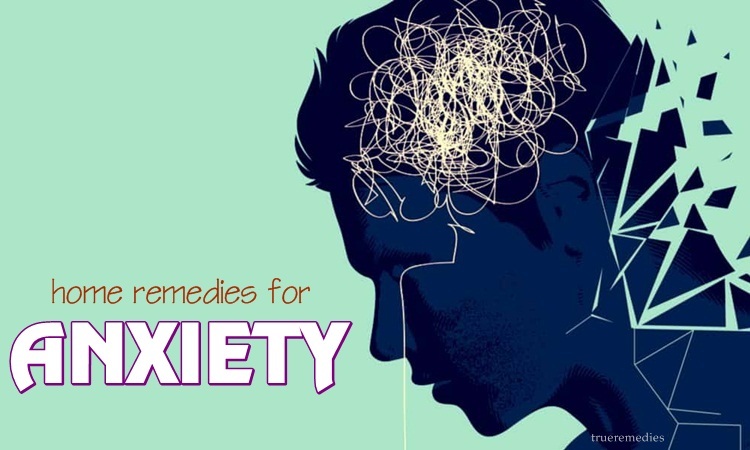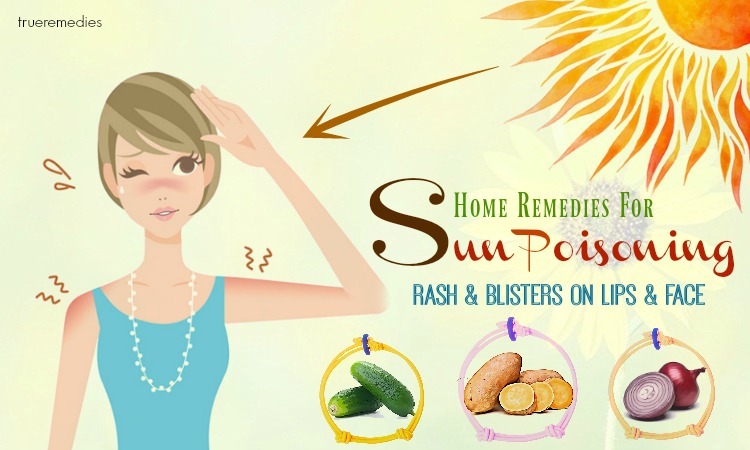Contents
Today, restless leg syndrome is no longer a strange disease. This situation makes you always have to move to feel satisfied. It can happen to anyone of any age and will get worse as you get older. Restless leg syndrome always makes you feel uncomfortable and insecure. So how to treat it? This is probably the question of many people. Understanding this, we write this article to provide you with useful tips to help you quickly get rid of this disease. But first, to understand it, let's find out the information below.
What Is Restless Leg Syndrome?
Restless leg syndrome is a condition in which the legs feel very uncomfortable when you sit or lie down. This is a condition that affects 10-15% of Americans. It makes you have to stand up and move around. If you do so, the discomfort of restless leg syndrome will temporarily disappear. This syndrome was first described in 1672 by the English physician Thomas Willis. He observed that the symptoms would become so severe that the patient would “not be able to sleep any longer if they were in the peak of the torture.” Finally, even if the patient goes to sleep due to fatigue, the symptoms may continue to persist [1] [2].
Restless leg syndrome is caused by a neurological disorder. Patients with this syndrome cannot fully control their legs, even if they are relaxed or they have no reason to exercise and move. Ironically, patients move their legs to get relief from the discomfort caused by abnormal sensations (called paresthesias) or uncomfortable abnormal sensations (called dysesthesias). In general, the feeling becomes more pronounced in the night when the patient tries to rest or sleep. Restless leg syndrome will get worse at night and early morning. Then, the symptoms of the neurological disorder which causes this syndrome become more apparent than ever.
Restless leg syndrome is one of the most common reasons of foot pain when resting. It can start at any age and it usually worsens as you get older. Women are more likely than men to develop this problem. The saddle syndrome can break your sleep, leading to sleepiness during the day. It also makes going and running difficult. Not only causing discomfort, if not treated early, restless leg syndrome can cause bad pain. This is what no one wants. Some simple steps to self-care and change lifestyle can help. The use of drugs also helps many people with restless legs syndrome.
What Are Common Causes Of Restless Leg Syndrome?
In most cases, the main reason for restless leg syndrome remains unclear. This is why it is called spontaneous neurological disorder. Researchers suspect the problem could be due to an imbalance of brain dopamine chemicals. This chemical sends messages to control muscle movement. Although the exact cause has not been determined, the following conditions may contribute significantly to the development or complications of this neurological disorder:
- Genetic Factors
Genetic factors cause symptoms in half of the patients with restless leg syndrome. Researchers have identified gene defects on chromosomes that may be present in people with restless leg syndrome. This means that if you have this syndrome, your child is at risk as soon as she or he is young.
TrueRemedies Partner Solutions

Need a Help from the Leading Expert Online, Available 24/7?
They’re all here and ready to answer your questions online or by phone. Keep asking questions until you get the answer you need.
- Pregnant
Pregnancy or temporary hormonal changes can aggravate the signs and symptoms of this syndrome. Some women experience restless leg syndrome for the first time when they are pregnant, especially in the last 3 months of pregnancy. However, for most of these, after they give birth, the signs and symptoms of restless leg syndrome usually disappear quickly.
For the most part, restless leg syndrome does not involve a serious medical problem. However, sometimes, restless leg syndrome is accompanied by other problems, such as:
- Peripheral Neuropathy
Certain chronic health problems such as diabetes, peripheral neuropathy, Parkinson's disease, alcoholism, or nutritional deficiencies can affect the nerves in the limbs.
- Iron Deficiency
Although restless leg syndrome does not cause anemia, iron deficiency can cause or aggravate the symptoms of this syndrome. If you have stomach or intestinal bleeding, frequent menstrual bleeding or multiple blood donations, you may have iron deficiency.
- Kidney Failure
If you have kidney disease, you may also have iron deficiency. When the kidneys do not work properly, blood iron levels may decrease. This, along with other changes in the body, can cause or exacerbate the symptoms of restless leg syndrome.
- The Use Of Certain Medications
Side effects of certain medications, such as depression, antipsychotic therapy, antihistamines, anti-nausea and cold or allergy medications, may be related to restless leg syndrome.
- Lack Of Nutrients
Restless leg syndrome seems to be associated with a deficiency in vitamins and certain minerals. Many people find their condition improved due to dietary changes.
- ADHD
In fact, attention deficit hyperactivity disorder (ADHD) also has been found to be linked with RLS.
- Other Factors
Other factors such as lack of sleep, smoking, stress, pressure and other lifestyle related factors can cause and aggravate the symptoms of restless leg syndrome.
What Are Common Symptoms Of Restless Leg Syndrome?
Restless leg syndrome is usually described with symptoms such as discomfort in the calf, thighs, feet or arms, which are often expressed as:
- Itching.
- Cramp.
- You always feel that some animal is climbing and biting your foot.
- Feeling the legs stretched.
- Pain.
- Twitch.
- Hot.
- Get started during idle time. Symptoms usually begin after lying down or sitting for a long time, such as in an airplane, car, or cinema.
- Relief by movement. Symptoms will deteriorate if you move.
- The symptoms worsen in the evening. Symptoms are less likely to cause discomfort during the day and usually worsen at night and early morning.
- Periodic limb movement disorder. Restless leg syndrome can be associated with a condition called Periodic limb movement disorder (PLMS). PLMS makes you extend your legs while sleeping without knowing that you are doing it. This can happen hundreds of times. If the condition becomes severe, this syndrome can occur even when you are awake. More than 4/5 patients with restless leg syndrome have undergone PLMS.
- These symptoms may disappear over a period of time.
Sometimes, describing the symptoms of this syndrome is a challenge.You may experience other symptoms not mentioned. If you have any questions about the signs of the disease, please consult your doctor.
What Are Risk Factors?
Restless leg syndrome can develop in people of all ages. Many adults can still remember the pain that this condition caused them when they were a child. This condition is more common in older people.You can control this problem by minimizing risk factors. Please see your doctor for more information.
When To See A Doctor?
If you have any signs or symptoms or have any questions, please consult your doctor. Each person's condition is different, so please consult your doctor to select the most suitable option.
Above are some basic information about restless leg syndrome. Hopefully with this information, you may have the most comprehensive view of this disease. Here are 25 best tips on how to treat restless leg syndrome symptoms in toddlers and adults naturally. Have a look at TrueRemedies.com!
Top 25 Tips On How To Treat Restless Leg Syndrome Symptoms In Toddlers And Adults
1. Practice Breathing Techniques
Practicing breathing techniques is the first home remedy in this list of tips on how to treat restless leg syndrome symptoms. When the symptoms of restless leg syndrome occur, slow down your breathing and try to focus on the breath. This is always the easiest way to stay calm, just remember to use this technique:
- Abdominal distension. Place your hands on your belly. When you breathe in, you try to use your stomach to push your arms out, and when you exhale, you should put your hands close to the abdomen.
- Breathe in through the nose and exhale through the mouth.
- Breathe deeply while counting to 5, hold the breath for 5 seconds, and then exhale slowly while counting to 5. Perform ten times so to relax muscles and spirit. When you breathe out, imagine that all the pain and discomfort is escaping your body through the breath.
2. Take The Time To Relax
This is another must-try treatment in this list of tips on how to treat restless leg syndrome symptoms. There are many stressors affecting your life, making it easy for you to be restless leg syndrome. However, do not worry too much. Please accept this. It is important for you now to find a space to relax and eliminate the pressure. To make relaxation a daily routine, consider the following:
- Eliminate Guilt
Many religious and cultural systems appreciate the value of hard work. Over time, as smart technology evolves, people work relentlessly; many of us believe that we must always “go forward” to prove our worth. If you do not understand the meaning of “work hard”, you will only feel tired. Working hard means paying close attention to your tasks at the right time, not letting it slip into your entire day! Guilt is a potential source of stress. Get rid of it by behaving properly. Stop the actions that make you feel guilty. You can seek professional help if you need it, but do not let the destructive behavior escalate and ruin your life and health.
- Recognize That Sleep Is An Extremely Important Part Of Life
Fatigue tends to aggravate the symptoms of restless leg syndrome, so it is important to have a good night's sleep. Ideally, sleep in a quiet and comfortable place. In your sleep, your mind will continue to operate (unlike when you are awake). Sleep restores and refreshes the body in ways that the body cannot do while awake. Most of us need 6 to 8 hours of sleep a day to recover completely. Dreams are an essential part of sleep. You can explore the magic world of your own and have the experience that you never get when awake.
- Have Fun At Night
Depression before bed can exacerbate restless legs syndrome. Brain-stimulating activities such as video games or crossword puzzles can help you to stay alert and relieve the symptoms of your syndrome.
- Set Aside Time During The Day To Relax
You might think it's an appointment with your most important customer – it's you – and you definitely cannot ignore or cancel this appointment.
- Let Everyone Know
If you are at home, bookmark the time in black ink on the calendar for everyone to see. As a result, members of the family will appreciate the importance of spending time relaxing.
- Please Be Patient
Understand that finding the best way to treat restless leg syndrome can take time, experimentation and even mistakes. But do not give up. Keep applying treatments until you find the one that works best. Do not worry and stress.
3. Choose A Healthy Diet
A poor nutrition diet and a diet rich in unhealthy foods can exacerbate your condition. Eating properly can help your body feel balanced and healthy, reduce the risk of sudden hyperglycemia and improve your restless leg syndrome. Try to consume the following foods in moderation:
- Avoid consuming too much refined sugar in cereals, pastries, sodas, and foods that contain carbohydrates, such as noodles, because they are easily converted into sugars. These foods can cause sudden changes in blood glucose levels, leading to anxiety and disruption of the ability to use energy efficiently.
- Avoid excessive caffeine. Too much caffeine can make you feel restless. Then, the symptoms of restless leg syndrome will quickly appear. Try to avoid caffeine after 1:00 pm, keeping caffeine intake in the morning at a moderate level and stabilizing every day. If you like to drink more coffee than recommended, try drinking tea with little or no caffeine.
- Drink a glass of water. Drinking water will quickly bring fresh energy to your body and give your brain a chance to stop thinking for a moment, and so it will help you find new ways of looking at the current stressful situation. This is most effective when the symptoms of your syndrome suddenly “revolt “.
- Eat fresh fruits, vegetables and whole grains without refining sugar such as apples, grapes, carrots, broccoli, brown rice and whole grain bread.
- Eat plenty of low calorie protein like chicken, fish, whole grains, legumes, leafy green vegetables or low fat milk. These proteins are the best source of energy.
- Take multivitamin. Many vitamins can reduce stress. Vitamin B and vitamin D are especially good for improving the symptoms of restless leg syndrome [3].
4. Take A Warm Bath With Epsom Salts
You can easily find Epsom salt in all drugstores with cheap cost. It is a natural anti-inflammatory as well as muscle soother upon used in a warm bath. The magnesium sulfate in Epsom salt has the ability to calm nerves and relax muscles. As a result, you will have a better sleep and get a relief from RLS symptoms.
In fact, Epsom salt has been traditionally used for treating muscle spasms, pain and deficiency in magnesium thanks to its chemical formula, which is broken down in sulfur, oxygen and magnesium.
You can have a warm bath with Epsom salt to relieve symptoms of RLS. Add 2 cups of Epsom salt into your warm bath water and soak your body in this solution for 30 minutes. Alternatively, you can add ½ cup of Epsom salt to a large pan of warm water and soak your lower leg and foot into this liquid for at least 20 minutes to reap its benefits. This method will soothe your legs, relax muscles and relieve RLS tingling and pain.
5. Essential Oils
The use of essential oils is an ancient withstanding practice of human beings which has been used for a long time. Aroma therapy could be used to calm nervous system, aid in peaceful sleep, ease muscle soreness, and relieve stress. This method has been an easy alternative form of the medical practice throughout history. Actually, there are a variety of studies show that using essential oils has immunomodulation impacts that could benefit people with RLS [4] [5].
Essential oils are packed with natural antispasmodic properties, helping inhibit problems accompanied by spasms, muscle pulls and cramps. You can take advantage of them before bedtime to sleep better.
You had better use essential oils in massage therapy to harness their benefits [6]. Do it by either visiting a professional massage therapist or performing simple massage by your own. Use rosemary, cedarwood, frankincense, peppermint, lavender or cypress essential oils for this method. When being at home, you can apply one of these essential to your affected areas of the trunks, arms or legs.
6. Hot-Cold Contrast Therapy
The hold-cold contrast therapy will help increase blood flow to your legs, thereby alleviating symptoms of RLS. About 2-3 hours before your bedtime, take a 5-minute shower in which 20 seconds are for cold water and 10 seconds for warm water. Altering heat and cold will be more helpful in decreasing pain as well as discomfort. Once you have completed this hold-cold contrast therapy, stand under warm water for some extra minutes to allow your nervous system to relax.
7. Increase Your Intake Of Electrolyte
Cramping could be a result of chronic depletion of essential minerals like calcium, magnesium, iron, sodium, potassium or any one among 80 minutes which are important to the function and relaxation of muscles. While you had better not slam a sugary commercial electrolyte beverage daily, you ought to consider taking natural sources of electrolyte and minerals, such as mineral-enriched water, Himalayan sea salts, trace liquid minerals, iron-rich foods like spinach and meat, and fruits and veggies grown in mineral-rich, organic soil.
Today, a large number of sports companies produce naturally flavored effervescent electrolyte tablets which could be dissolved in drinking water, so you can make use of them if needed.
8. Probiotics
One of easy but effective tips on how to treat restless leg syndrome is taking probiotic foods such as kefir and live-culture yogurt. They assist you in increasing beneficial gut bacteria population, accelerating the absorption of nutrients from foods, and combating numerous undesirable microbes.
However, remember that if you have gluten intolerance or any other food allergies, you should avoid those respective foods since celiac disease might provoke the risk of RLS.
9. Take More Magnesium
As mentioned earlier, the deficiency of magnesium causes muscle tightening and twitches that may trigger or even worsen symptoms of restless leg syndrome. Thus, a balance between calcium and this mineral is essential as it is required to eliminate excess calcium from soft tissues and support their relaxation. In fact, deficiency in magnesium also leads to calcification of smooth muscles.
10. Peppermint Tea
Have you ever thought that drinking hot peppermint tea is also a tip on how to treat restless leg syndrome? This sounds irrelevant, but it does help reduce your RLS symptoms and give you a good night sleep.
Peppermint leaves have a large amount of menthol, which is medically shown to be highly effective in curing RLS.
To prepare this herbal tea, you can take the following steps:
- Boil a handful of peppermint leaves in about 2 cups of water
- Let it steep for 5 minutes before straining it
- Sweeten the tea with a teaspoon of raw organic honey
- Drink this tea before your bedtime for good results
11. Apple Cider Vinegar
Another way on how to treat restless leg syndrome is to take diluted apple cider vinegar nightly. People with RLS often find a significant relief after taking this liquid. It helps improve the body’s ability to absorb various nutrients and restore the body’s natural pH levels.
You can dissolve 1 tablespoon of apple cider vinegar in a cup of warm water. Then, drink this mixture slowly before hitting the bed. Apply this tip for a few weeks to relieve RLS symptoms naturally.
12. Black Strap Molasses
Having a large content of iron, which is proven to treat symptoms of RLS, black strap molasses is really worth mentioning in this checklist. Owing to the integral component named hemoglobin, iron can transport oxygen from your lungs to other body cells and also is essential for metabolism and energy. Other minerals such as potassium and calcium are also found in black strap molasses. You can easily find this ingredient in most natural food or health stores.
- Put 1 tablespoon of black strap molasses in a cup of water
- Have this liquid about 30 minutes before your bedtime
- Repeat this method daily to get good results.
Alternatively, you can also mix 1 tablespoon each of apple cider vinegar and black strap molasses and add to a cup of water, then enjoy this mixture to get similar effects.
13. Parsley
Another beneficial tip on how to treat restless leg syndrome is parsley tea. In this humble herb, you can find a rich content of iron, which is twice the iron amount as in spinach. This mineral can reverse the iron deficiency which induces restless leg syndrome [7] [8]. Also, parsley is a powerhouse of other essential nutrients such as vitamin C, calcium, folic acid and potassium. Vitamin C empowers you to absorb heme and non heme iron optimally.
In an effort to prepare parsley tea, you just need to take the steps below:
- Boil ¼ cup of finely chopped parsley leaves in about 2 cups of water
- Let it steep for 5 minutes before straining
- Add 1 teaspoon of raw organic honey to sweeten the tea
- Have this brew before going to sleep
14. Dry Brushing
Dry brushing is an Ayurvedic practice which has been commonly used to boost blood circulation and thus also support with lymphatic flow and build-up of blood within the legs. Besides, this method also improve the function of your nervous system, gives a boost to your energy and strengthen your immune response, thereby reducing symptoms associated with RLS. To get better results, combine dry brushing with Epsom salt bath to relieve muscle spasms, tingling sensation or bruises.
You can follow these guidelines to use dry brushing as a tip on how to treat restless leg syndrome:
- When your skin dry (ideally before having a warm shower), take a natural bristle brush
- Brush your skin in the affected area in the direction of the heart to remove dead skin cells and open skin pores for detoxifying
Note: Avoid doing this method before bed to not interfere with your sleep.
15. Tonic Water
In essence, tonic water is a carbonated soft drink having quinine, which is a compound helping settle our nervous system and give a relief from different symptoms of RLS. This liquid acts as a muscle relaxant while improving the blood flow to muscles.
However, be careful when using tonic water as large doses of quinine may be associated with some side effects. A dosage of 20 mg of quinine per 8 ounces of tonic water is a safe to use.
You can drink ¼ cup of tonic water prior to bedtime nightly to help your body absorb quinine.
16. Camphor
Having antispasmodic and therapeutic actions, camphor can lessen symptoms of RLS and relieve inflammation at a time.
You just need to rub a little camphor oil over your legs prior to bedtime. That way, the tingling sensation in legs will disappear in no time. Repeat this method every day to get best results.
Alternatively, you could also take advantage of camphor cream for similar results.
17. Daily Exercise
In regard how to treat restless leg syndrome in toddlers and adults, daily exercise plays an important role in the treating process. This is the most well-known and scientifically proven way to significantly reduce the symptoms of restless leg syndrome [9] [10] [11]. You will be surprised to find out how easy it is to overcome this syndrome if you exercise regularly. You can try the following ideas:
- Every day, moderate activity for at least 30 minutes.
- Take a walk in the park, in the woods, or do daily chores.
- Take the stairs instead of the elevator.
- Try to swim in the nearby pool or pool at a friend's or relative's home. You do not have to be a good swimmer. Just think of soaking in water is good enough to relax.
- Muscle stretch. Let down your shoulders to relax. Pay more attention to the stress that builds up in your shoulders and neck [12].
18. Think Positively
The next treatment in this list of tips on how to treat restless leg syndrome in adults is thinking positively. Positive thinking is not a wish or fantasy. That is to avoid covering the negative color on the situation. This helps you stay comfortable to overcome the symptoms of restless leg syndrome. Try the following to do this:
- Use the visualization method. At times when you cannot feel calm and serene, imagine in your mind a peaceful and serene scene. This can help to improve your mood dramatically. Let’s see the beach in the picture, put your back to rest, or go for a picnic to get relaxed.
- Use affirmation to change your outlook on life and avoid hastily making negative conclusions. Confirmation is a brief and powerful statement to build and enhance confidence, helping you to hope for positive results.
- Be careful about the words you choose – things you repeat yourself will help you believe in your claims. Use positive and trusting words and love yourself.
- Change the method. If the problem is with what you are doing, then change your action or reaction. Stop and listen to people around you to find and fix things you may be misreading or doing wrong.
- Look at the factors that cause stress by the objective eye. You should have a realistic look at what is causing you panic, and ask yourself how you would advise your partner if they were in that situation. Then follow your advice.
- Understand that most of the symptoms of restless leg syndrome are only temporary. Do not focus too much on them, believe that the treatments you are applying are gradually promoting effectiveness.
19. Find A Quiet Place And Pamper Yourself
Whenever you are suffering from symptoms of restless leg syndrome, do not try to suffer. Find a quiet place and pamper yourself. This will make you feel both physically and mentally relaxed. Strangely, this is very simple but it can improve your condition significantly. To do this, you can apply some of the following methods:
- Soak in a warm bath. Light the candles around the bath, so that the light is dim. Foam or add lavender to the bath if you like. Sometimes looking at yellow also creates a relaxing effect.
- Collect yellow items in the room. You can even spray yellow on the onions, though you cannot eat them, you can improve your mood by looking at them. This may sound strange, but it is very useful.
- Lie on the sofa or chair. Open the music CD or the sound of nature. Relax with the sound of waves, waterfalls or birds singing.
- Imagine a paradise of your own. Close your eyes and imagine the different scenes. What do you see around you? A light wind? What do you hear? Flowing water or birds singing? Imagine the sound of waves breaking on the shore. Enjoy the wonderful moment in your own “realm”.
- Even office work can become a “quiet place” to relax if you have nowhere to go.
20. Meditation
The next tip on how to treat restless leg syndrome symptoms is practicing meditation. Meditation helps you resolve the discomfort and pain that restless leg syndrome causes. Meditation removes all thoughts and emotions from the mind by focusing on the breath. It helps you relax the whole body, not just focus on the relaxation of parts as some other relaxation methods. It may take you some time to become proficient, but the result is worthy of your efforts.
Start with a minimum of 15 minutes and gradually increase to 45-60 minutes per session. Try to meditate regularly. Find a good teacher if you find it difficult to learn meditation yourself. Avoid tension, competition or frustration with sitting meditators – all of these emotions ruin the purpose of meditation! Besides meditation, yoga can also be helpful to your syndrome.
21. Play With Pets
This sounds strange when it comes to tips on how to treat restless leg syndrome symptoms in toddlers and adults, but it works. Stroking or playing with your pet is a great way to help you calm down and help improve the symptoms of restless leg syndrome. Pets will like you as you will also like them. Tell your pet about the pain and discomfort you are experiencing and you will feel much better. Pet therapy is a very good treatment for restless leg syndrome. You can also learn a lot from observing how they relax (note that animals do not carry feelings of guilt)!
22. Medication For Parkinson's Patients
These drugs reduce the amount of foot movement by affecting the level of dopamine in the brain. Two drugs, Ropinirole (Requip) and Pramipexole (Mirapex), are approved by the US Food and Drug Administration for the treatment of moderate to severe restless leg syndrome.
Doctors also use other drugs to treat restless leg syndrome, such as Levodopa and Carbidopa (Sinemet). People with restless leg syndrome are at increased risk of developing Parkinson's disease than others. Side effects of medication for Parkinson are mild and they include nausea, dizziness and fatigue.
23. Opioid
No wonder, this is definitely one that should be mentioned in this list of tips on how to treat restless leg syndrome in toddlers and adults. Opioids can relieve severe symptoms of restless leg syndrome, but you can be dependent on them if you take them with too high dose. Opioids include codeine, oxycodone (Roxicodone), combinations of oxycodone and acetaminophen (Percocet, Roxicet), and a combination of hydrocodone and acetaminophen (Lortab, Vicodin) [13] [14].
24. Muscle Relaxants And Sleeping Pills
This is another must-try tip on how to treat restless leg syndrome symptoms. Medications like benzodiazepines help patients with restless leg syndrome to sleep better at night. But these drugs do not eliminate the feeling of this syndrome, and can cause daytime sleepiness. Typically, sedatives used for this syndrome include clonazepam, triazolam (Halcion), eszopiclone (Lunesta), ramelteon (Rozerem), temazepam (Restoril), zaleplon (Sonata), and zolpidem (Ambien).
25. Medication For Epilepsy
Last but not least important in regard to tips on how to treat restless leg syndrome symptoms in toddlers and adults is using medications for epilepsy. Despite this is not a natural cure, but it is helpful for instant use. Some epileptic drugs, such as gabapentin (Neurontin), may be helpful for some patients with restless leg syndrome. You can consult with your doctor about the use of these medications. Your doctor will have to do some tests to find the right medicine and the right dosage for you. A combination of drugs can work best.
One thing to remember when using medicines to treat restless leg syndrome is that, sometimes a medication may no longer be effective with your condition. Most prescribed medications for the treatment of this syndrome should not be used in pregnant women. Instead, your doctor may recommend a self-care technique to relieve symptoms. However, if the feeling is particularly uncomfortable in the last 3 months of pregnancy, your doctor may approve the use of pain medication.
Some drugs can cause symptoms of restless leg syndrome. These include most antidepressants and some anti-nausea medications. Your doctor may advise you to avoid these medications if you can. However, if you need to take these medications, restless legs can still be controlled by adding managed medicines.
In a nutshell, restless leg syndrome is associated with discomfort in the legs which interrupt your sleep and might trigger you to move your legs. To minimize the impacts of this condition, you should establish a healthy nightly routine to improve your sleep quality, correct any possible deficiencies, and massage or stretch your legs often. Also, consume more foods with B vitamins, iron, and magnesium; reduce sugar, caffeine and alcohol intake.
Ultimately, you might find that a certain combination of the tips on how to treat restless leg syndrome above works best. It is necessary for you to experience a process of trial-and-error in order to find out what really gets rid of your problem.
If you have any questions or comments about our article of “Top 25 Tips On How To Treat Restless Leg Syndrome Symptoms In Toddlers And Adults Naturally” introduced in How To Category, then leave your thoughts below this post. We will answer as soon as we could.

